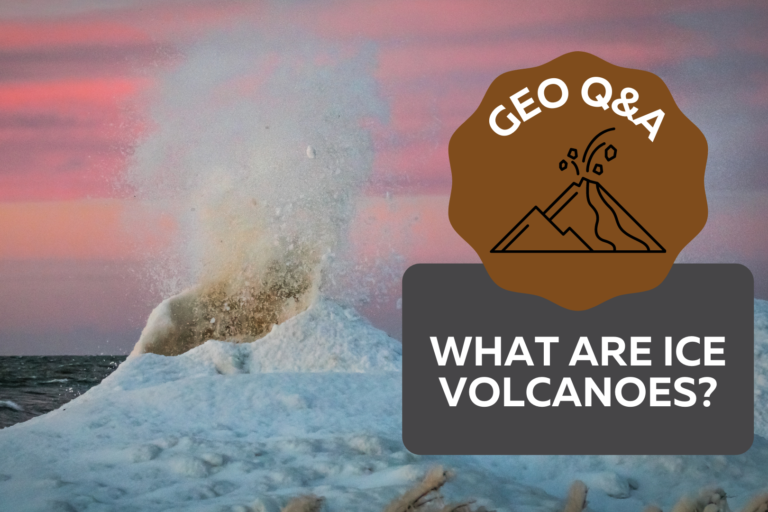If you’ve ever walked on the shoreline of one of the Great Lakes in the winter, you might have seen some inconspicuous mounds of ice on the water. These mounds, often forming in lines parallel to the shore, are known as ice volcanoes. Although they don’t spew fire like their rocky counterparts, if conditions are right, ice volcanoes can erupt icy cold water up to 10 metres high! They are typically conical in shape, like a stratovolcano, and have a hole going down the middle.

What are the conditions for an ice volcano to form?
Ice volcanoes can grow in a matter of hours—but only if the conditions are right. Usually, ice volcanoes only form on freshwater lakes because salt water has a lower freezing temperature. The lake must not be completely frozen, because they depend on wave action to form. It also must be cold enough outside for the spray from the waves to freeze into ice. If all these conditions are present, then there is the potential for an ice volcano to form.
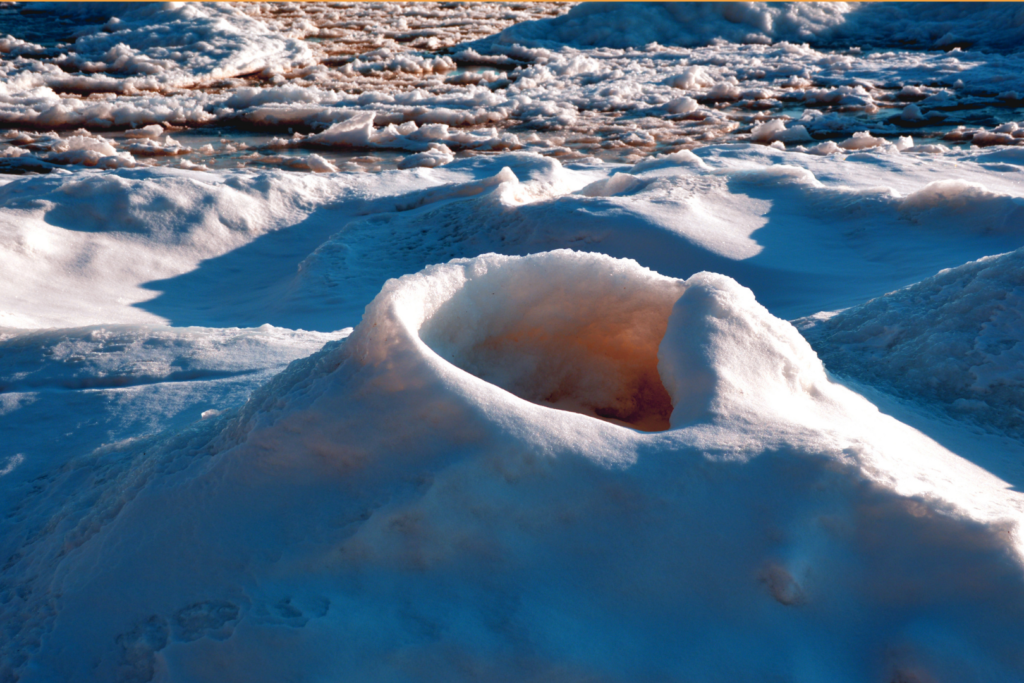
How do ice volcanoes form?
Firstly, water freezes on the edge of the lake forming an ice shelf. The waves from the lake hit the ice shelf and go over and underneath it. When the water flows under the shelf, it sprays up through any cracks or holes in the ice. The spray from the water freezes on top of the shelf around any cracks or holes. If this process continues for long enough, the ice can grow into a mini volcano surrounding an existing hole!
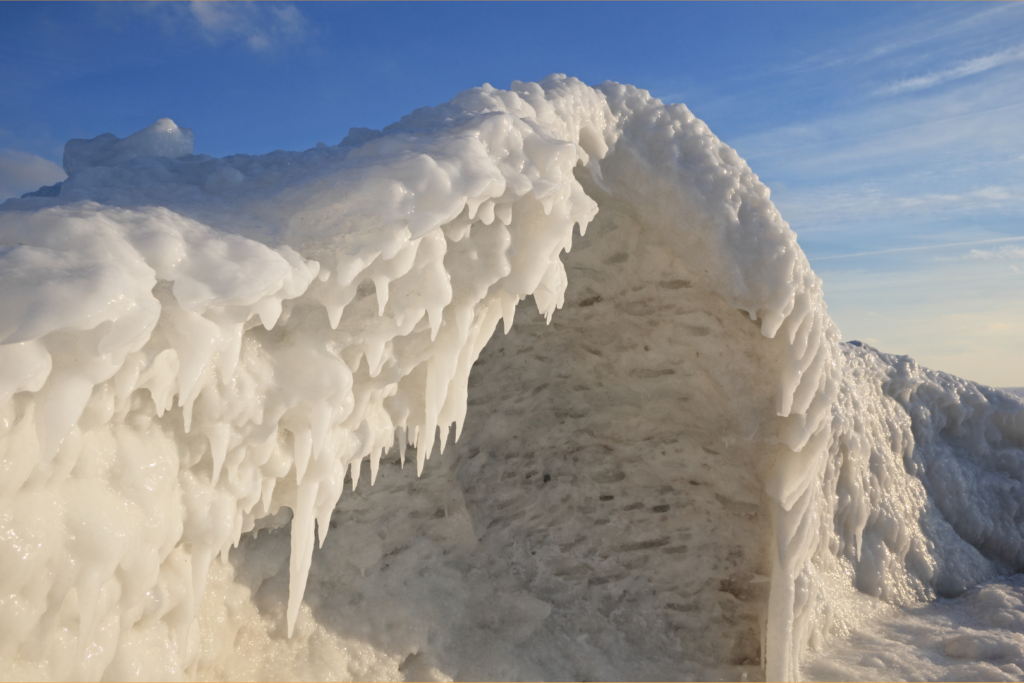
Where can I go to see them?
If you want to see an ice volcano, be sure to keep a safe distance away and always stay on shore. The best place to see ice volcanoes is on the southern shores of Lake Erie and Lake Ontario. When the onshore wind is above 40km/hour and the temperature is below freezing, there are often rows of volcanoes by the shore. They can also form over sand bars or rocky reefs, although this is less common. This process is similar because the water is pushed upward under an ice shelf as it reaches shallower depths. From shore, you might even be able to locate a sand bar by the distinctive row of volcanoes on top of it.

Why are ice volcanoes dangerous?
Although icy cold spray from an erupting volcano may not be pleasant, the real danger from ice volcanoes is getting stuck inside one. If someone were to climb a volcano and fall inside the mouth, it would be extremely difficult for them to get out of the cold lake water surrounded by ice. Ice shelves are often unstable and cannot hold much weight. It is very important to never try to walk on an ice shelf or climb ice mounds. Always view them safely from shore.
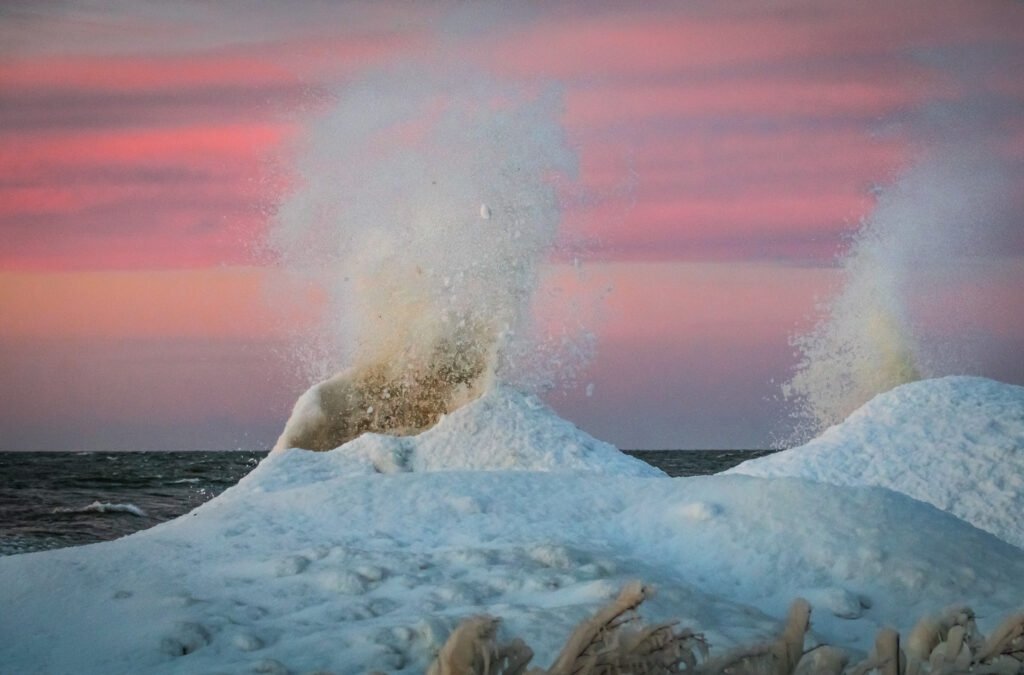
Why are ice volcanoes important?
Ice volcanoes are useful in helping protect shorelines from erosion caused by waves and storms. While this protection doesn’t last long because the life of an ice volcano is relatively short, their presence still contributes to reducing shore erosion. Geoscientists study how erosion impacts the stability of shorelines and slopes in order to protect infrastructure from damage. If you’re curious about how geoscientists research and protect oceans, lakes, rivers and groundwater, checkout this video from GeoscienceINFO.com:
Can we see ice volcanoes in other places?
The Great Lakes are an excellent location to see ice volcanoes, but that’s not the only place you’ll find these types of structures. Astronomers have seen similar formations on other planets and celestial bodies! Off Earth, these formations are called cryovolcanoes, literally meaning “cold volcano.” They don’t only spew water, they can also erupt other volatiles like methane and ammonia.
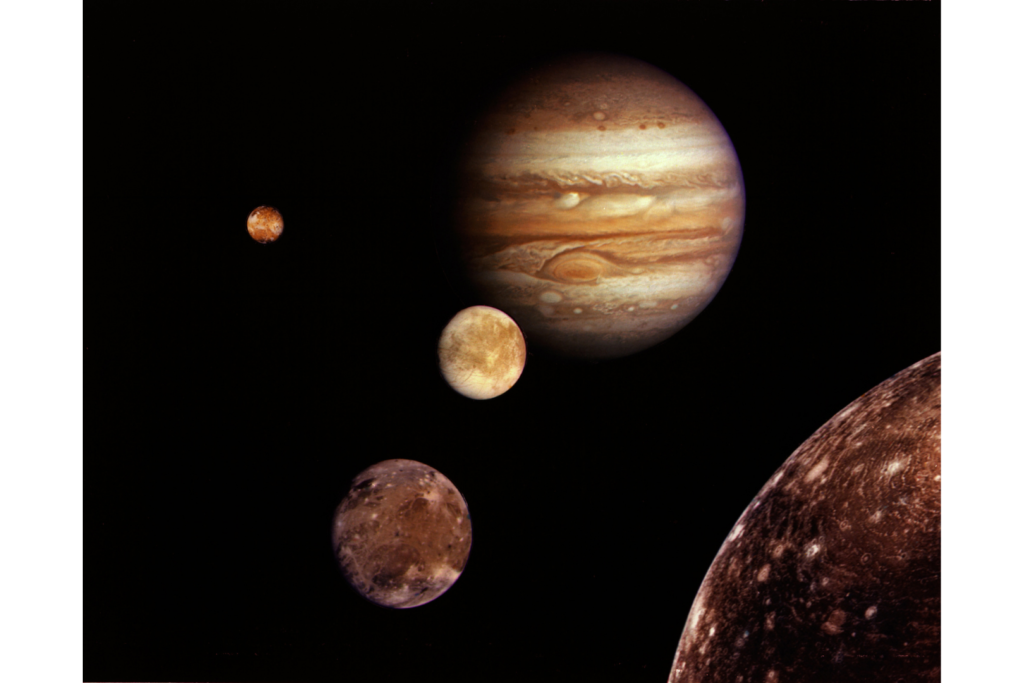
How do cryovolcanoes form?
Similar to ice volcanoes on Earth, the temperature must be cool enough to freeze volatiles like water, methane, and ammonia. This most often happens on planets on the outer edges of solar systems, like the dwarf planet Pluto, or on moons and asteroids. The essential elements of cryovolcanoes are the same as ice volcanoes on Earth: an icy cone with liquid erupting up from underneath. But the actual formation of cryovolcanoes can be quite different.
It has been theorized that a process called tidal friction is responsible for the formation of some cryovolcanoes. Jupiter’s moon Europa is made up of a worldwide ocean of liquid water or slushy ice with an overlying icy crust. The liquid under the crust moves due to the gravitational pull of Jupiter, creating tides. The moving liquid puts pressure on the ice, making cracks and fissures. As the liquid sloshes through these cracks in the crust and freezes, cryovolcanoes grow around the cracks and holes.
However, tidal friction isn’t the only possible explanation for the formation of cryovolcanoes. If the inside of a planet is hot enough, materials that are melted will rise to the surface and create cryovolcanoes, similar to how magma rises through the mantle on Earth. There are two potential sources of heat on these celestial bodies. The first is caused by the decay of radioactive elements creating radiogenic heat. The second is heat left over from the formation of the planet, called primordial heat.
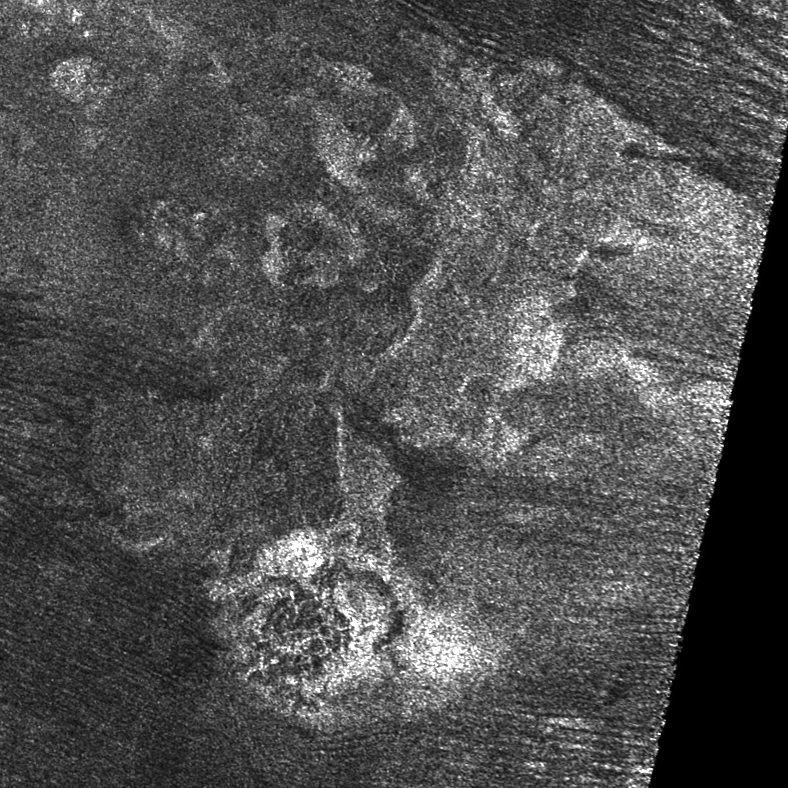
Why are cryovolcanoes important?
Cryovolcanoes can tell us a lot about the makeup of celestial bodies. For example, the finding of a giant cryovolcano on Saturn’s moon Titan helped to explain a prexisting mystery of the moon. The atmosphere of Titan has a large amount of methane in it, but since methane breaks down in sunlight, there should be less methane in the atmosphere than there is. The presence of the cryovolcano suggests that the methane is replenished from the interior of the planet by eruptions from the cryovolcano. Cryovolcanoes can help scientists to understand the mechanisms that create formations on celestial bodies.

The beauty of ice volcanoes
If you want to see ice volcanoes in action, go to the shore of a Great Lake this winter. If conditions are just right, you might be lucky enough to see one of these volcanoes erupting water into the air. Remember to never climb ice volcanoes or walk on an ice shelf. If you can’t find a fully formed ice volcano, instead look at how water flows under an ice shelf and freezes through the cracks in the ice. It’s pretty remarkable how these volcanoes form, and even more interesting to think about the similar formations on other planets millions or billions of kilometres away!
Sources & more resources:
Ice Volcanoes on Lake Superior
Scientific Study of Ice Volcano Characteristics
Titan’s Cryovolcanoes, Pictured by Cassini Spacecraft

Veronica Klassen is the Manager of the Foundation’s blog – Beneath Your Feet: A Geoscience Blog. She studied Arts and Science at McMaster University with a minor in Earth Science and has a masters in Science Communication from Laurentian University. She is passionate about making science accessible and engaging to the public.

